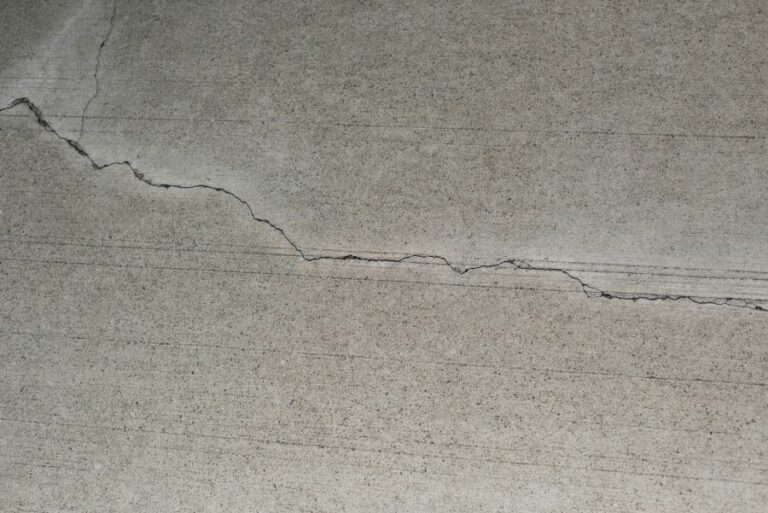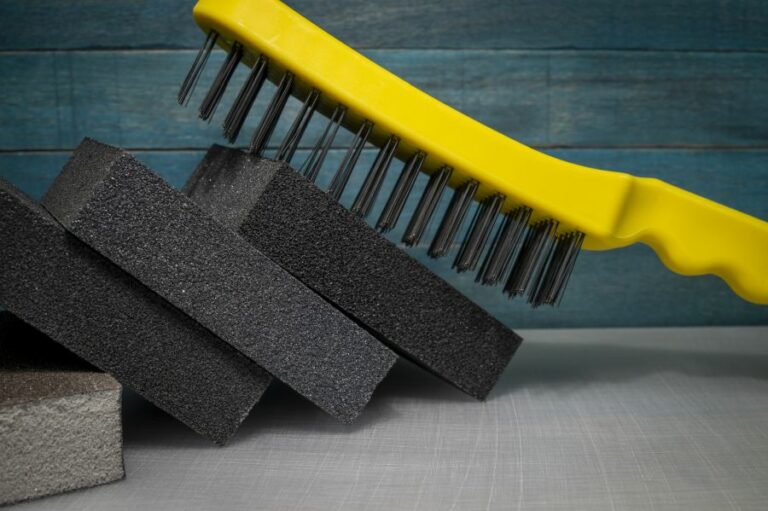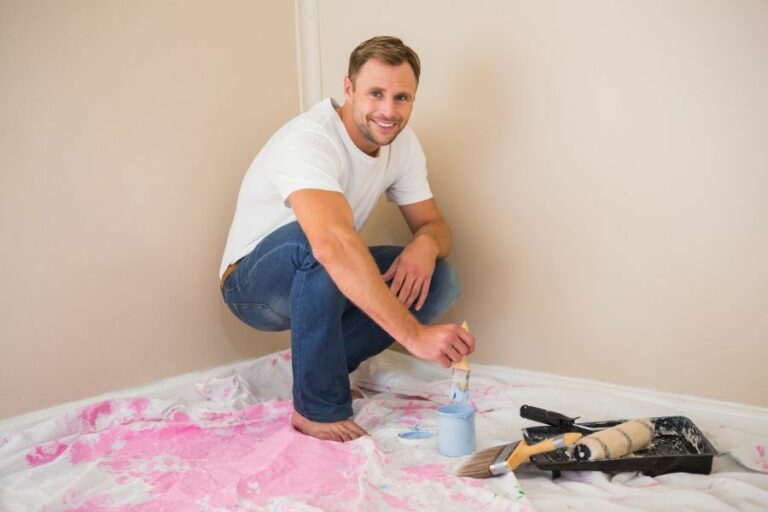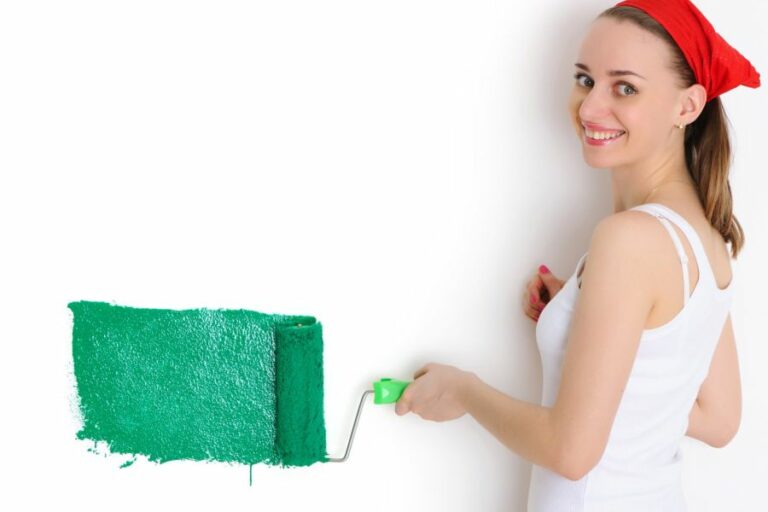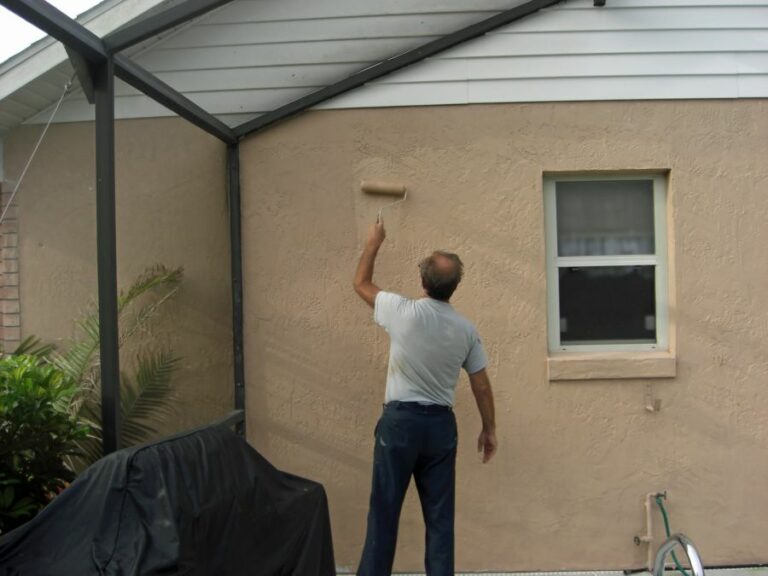Pressure Washing Exterior Surfaces For Thorough Cleaning
The importance of maintaining a clean and appealing exterior for your home cannot be overstated. Often, the most impactful way to achieve this is through pressure washing, a powerful and efficient method that leaves surfaces looking fresh and rejuvenated. With the right techniques and equipment, you’ll quickly see why this method is second to none when it comes to thorough cleaning.
Pressure washing exterior surfaces for thorough cleaning:
Pressure washing is an efficient method of maintaining cleanliness and curb appeal of residential or commercial properties. It uses high-pressure water spray to remove grime, dirt, mold, algae, and other contaminants from surfaces like concrete, brick, wood, and stucco. Regular pressure washing can enhance the property’s appearance, increase resale value, and improve overall health by eliminating allergens and contaminants.

Discover the incredible benefits of pressure washing exterior surfaces for thorough cleaning. Unveil the secrets to effectively remove dirt, grime, mold, and more. Keep reading to transform your space into a stunning sanctuary. Don’t miss out!
Contents
- 1 Comprehensive Cleaning: Pressure Washing Exterior Spaces
- 1.1 • Why Pressure Washing is Invaluable for Your Property
- 1.2 • Choosing the Right Pressure Washer
- 1.3 • Preparing the Area for Pressure Washing
- 1.4 • Proper Power Washing Techniques for Effective Cleaning
- 1.5 • The Importance of Post-Cleaning Treatments
- 1.6 • Working with Professional Pressure Washing Services
- 1.7 • Conclusion
- 2 Is Pressure Washing Efficient for House Exteriors?
- 3 Pressure Washing Elevated House Zones: A How-To Guide
- 4 Selecting the Right Pressure Washer Strength for House Cleaning
- 5 Top Method for Immaculate House Exterior Washing
Comprehensive Cleaning: Pressure Washing Exterior Spaces
• Why Pressure Washing is Invaluable for Your Property
Pressure washing is an efficient and effective method to maintain the cleanliness and curb appeal of your residential or commercial property.
It utilizes high-pressure water spray to remove grime, dirt, mold, algae, loose paint, and other contaminants from surfaces such as concrete, brick, wood, and stucco. This professional cleaning service is ideal for a myriad of exterior surfaces, including driveways, sidewalks, decks, fences, and more.
By regularly performing pressure washing maintenance, you can extend the life of your surfaces, save money on costly repairs, and even improve your overall health by eliminating allergens and contaminants.
• Choosing the Right Pressure Washer
The first step in pressure washing exterior surfaces is to choose the appropriate pressure washer for the job. There are two main types of pressure washers: gas-powered and electric.
Gas-powered models produce higher pressure and flow rates, making them suitable for heavy-duty cleaning tasks, such as concrete or large decks. On the other hand, electric pressure washers are quieter and easier to maintain, ideal for smaller, more delicate surfaces like outdoor furniture.
When selecting your pressure washer, consider factors such as the type and size of the surface, the presence of grease or oil, and the distance to a power source.
Additionally, it is essential to review the cleaning power units (CPUs), which is a calculation of the machine’s pressure (PSI) and flow rate (GPM). A higher CPU often results in more efficient and quicker cleaning.
• Preparing the Area for Pressure Washing
Before you begin pressure washing, take time to prepare the area properly. Remove any loose debris, such as leaves, branches, or furniture. If any plants or shrubbery are close to the surface, cover them with plastic sheets or tarps to protect them from the pressure washing chemicals.
Ensure that all windows, doors, and electrical outlets are sealed or covered to prevent water damage. Also, check for cracks, gaps, and damaged sections of the surface, and address these issues before washing as high-pressure water could exacerbate existing problems.
• Proper Power Washing Techniques for Effective Cleaning
Adopting correct power washing techniques can ensure a thorough and safe cleaning process. Follow the manufacturer’s instructions regarding water pressure, distance to the surface, and cleaning solutions.
Begin with a wider spray nozzle or lower pressure and gradually adjust as needed, keeping in mind that using excessive pressure can cause surface damage.
Test your pressure washer and chosen cleaning solution on a small, inconspicuous area before starting the entire cleaning process. This will allow you to gauge how the solution interacts with the surface and determine the best cleaning techniques.
When washing, maintain a consistent distance from the surface and keep the nozzle at an angle to avoid gouging or concentrating the water pressure. To prevent streaks or uneven cleaning, start from the top of the surface and work your way down, overlapping each spray pass slightly.
• The Importance of Post-Cleaning Treatments
After pressure washing, consider applying sealants, stains, or other treatments to enhance and protect surfaces. For instance, applying a sealer to a deck or concrete surface can prevent water damage and extend the life of these materials.
Additionally, a fresh coat of paint on a fence or exterior walls can amplify your property’s curb appeal.
Application of post-cleaning treatments should be done in accordance with the manufacturer’s instructions and local climate conditions, allowing for proper drying time and temperatures.
• Working with Professional Pressure Washing Services
If tackling the pressure washing task on your own seems daunting, consider hiring professional pressure washing services. These companies have the expertise, tools, and resources to ensure thorough cleaning while minimizing the risk of damage to surfaces.
To find a reputable pressure washing company, ask for recommendations from friends and family, check online reviews, and inquire about the company’s experience and certifications.
It is crucial to obtain quotes from multiple providers and compare their services, pricing, and warranties before making your final decision.
• Conclusion
Pressure washing can be an invaluable maintenance tool for maintaining the appearance and longevity of your property’s exterior surfaces.
By choosing the right pressure washer, preparing the surfaces, employing proper cleaning techniques, and possibly adding post-cleaning treatments, you can dramatically improve the look and functionality of these spaces.
Whether you undertake this task yourself or seek professional assistance, regular pressure washing can contribute to a clean, welcoming property for years to come.
Is Pressure Washing Efficient for House Exteriors?
Cleaning the exterior of your home is essential to maintain its appearance and prevent dirt, mold, and mildew from causing damage. One of the most effective and efficient ways to clean the outside of a house is by using a pressure washer.
• Benefits of Using a Pressure Washer
Using a pressure washer to clean your home’s exterior offers numerous benefits:
- Efficient Cleaning: Pressure washers can remove dirt, grime, mold, and mildew quickly, making it a time-saving solution for cleaning the outside of a house.
- Reduced Need for Chemicals: The high-pressure water effectively loosens and removes debris without the need for harsh chemicals.
- Long-Lasting Results: A thorough pressure wash will leave your home looking fresh and clean for an extended period.
• Choose the Right Pressure Washer
Before beginning the cleaning process, choosing the right pressure washer for your needs is important. There are two main types of pressure washers: electric and gas-powered. Electric models tend to be lighter, quieter, and more affordable, making them popular for homeowners.
On the other hand, gas-powered pressure washers offer more power which may be necessary for larger homes or particularly stubborn grime.
In addition to the power source, consider the pressure output, measured in pounds per square inch (PSI). A PSI range of 1,300 to 2,500 is generally suitable for residential use. Higher PSI models may be too powerful and could damage your home’s exterior.
• Tips for Using a Pressure Washer Safely and Effectively
Before using a pressure washer, it’s essential to understand how to operate it safely and effectively. The following tips will help ensure a successful cleaning experience:
- Wear Protective Gear: Ensure you wear closed-toe shoes, long pants, and safety goggles to protect yourself from debris and water spray.
- Choose the Right Nozzle: Pressure washers come with different nozzle sizes, each with a specific spray angle. Wider angles (such as 25 or 45 degrees) are best for cleaning the outside of a house, as they disperse the pressure and reduce the risk of damage.
- Maintain a Safe Distance: Keep the nozzle at least 12 inches away from the surface of the home, moving closer as needed to effectively remove dirt without causing damage.
- Start at a Low Pressure: Begin cleaning with a lower pressure setting and only increase it as necessary to remove dirt and grime.
• Cleaning Techniques
To achieve the best results, follow these cleaning techniques when using a pressure washer:
- Start at the Top: Begin cleaning at the top of your home and work your way down, as dirt and grime will naturally flow down during the cleaning process.
- Use Smooth, Overlapping Strokes: Move the pressure washer wand in a smooth, side-to-side motion, overlapping each stroke to ensure an even clean.
- Avoid Windows and Doors: Be cautious around windows, doors, and other fragile areas, as the high-pressure water can cause damage or leaks.
- Rinse Thoroughly: After cleaning, rinse the exterior from top to bottom with clean water to remove any remaining debris.
• Alternatives for Delicate Surfaces
While pressure washing is an effective way to clean most home exteriors, some materials, such as wood or vinyl siding, may be more susceptible to damage.
In these cases, consider using a soft wash method, which involves applying a cleaning solution with a low-pressure sprayer and gently scrubbing the surface with a soft-bristle brush.
In conclusion, using a pressure washer can be a highly effective and efficient method for cleaning the outside of a house. By choosing the right equipment, following safety precautions, and employing the proper techniques, homeowners can achieve a clean and well-maintained home exterior.
Question | Answer |
|---|---|
Can you use a pressure washer to clean the outside of the house? | Yes, you can use a pressure washer to clean the outside of your house, but it is essential to exercise caution and ensure that you use the correct settings and techniques to avoid damaging your home’s exterior surfaces. |
Pressure Washing Elevated House Zones: A How-To Guide
Pressure washing your house is an essential part of maintaining its exterior. Over time, grime, algae, and mildew can accumulate on your home’s exterior, making it necessary to clean those areas thoroughly. One challenge many homeowners face is effectively pressure washing high areas of their houses.
• Choosing the Right Equipment
Using the correct tools and equipment is crucial for pressure washing in high areas. The right choice can make cleaning more manageable and help prevent potential damage to your home.
– Pressure Washer
Choose a pressure washer with the appropriate power (measured in PSI or pounds per square inch) for your specific cleaning needs. Residential pressure washers typically range from 1,300 to 2,800 PSI. For most home exteriors, a pressure washer with 2,000 to 2,600 PSI should be sufficient.
Additionally, consider purchasing or renting a washer with an adjustable pressure setting to adapt to various surfaces and heights.
– Extensions and Telescoping Wands
Extensions and telescoping wands are essential for pressure washing high areas. They allow you to maintain a safe distance from the cleaning surface while reaching greater heights. Telescoping wands can usually extend between 12 to 24 feet, making them suitable for cleaning most two-story homes.
– Nozzles
Different nozzle types can also help with pressure washing in high areas. A nozzle with an adjustable fan pattern or quick-connect spray tip system can make targeting and cleaning high spaces more manageable.
For instance, a 40-degree nozzle delivers a gentler spray, while a 0-degree nozzle provides a more powerful, focused stream. Be cautious when using the latter, as it can potentially damage some surfaces.
I recommend using a nozzle specifically designed for high-pressure soap applications. This nozzle type allows for more effective cleaning without the need to climb a ladder and manually scrub those challenging areas.
• Safety Measures
When pressure washing high areas of a house, safety should be a top priority. Adhering to the following safety tips can help prevent accidents and ensure a more enjoyable pressure-washing experience.
- Wear safety goggles, gloves, and slip-resistant shoes while pressure washing.
- Never use a ladder while operating a pressure washer. The force of the spray can cause you to lose balance and fall.
- Be cautious when working on wet surfaces or uneven terrain to avoid slips and falls.
- Do not point the pressure washer nozzle at yourself, others, or pets.
- Make sure to read and follow the manufacturer’s instructions for your pressure washer and its accessories.
• Proper Cleaning Techniques
Using the correct pressure washing techniques can help prevent potential damage to your home’s exterior and ensure a thorough, efficient cleaning experience.
– Start With Lower Pressure
When beginning the cleaning process, start with a lower pressure setting and slowly increase pressure as needed. Starting with too much force can cause damage, particularly to your home’s siding, windows, and other vulnerable areas.
– Use the Right Cleaning Solutions
Using the appropriate cleaning solution can make a noticeable difference in pressure washing results. Choose a detergent specifically designed for pressure washers and the type of surface you are cleaning, such as siding, brick, or stucco.
Many pressure washers have a built-in detergent reservoir or siphon tube for easy application.
– Cleaning Technique
When pressure washing high areas, begin at the lowest point and work your way up. This method prevents streaking and allows gravity to aid in the cleaning process. In addition, use a consistent, overlapping pattern to ensure even coverage without missing any spots.
– Rinse Thoroughly
Once you have completed cleaning the high areas, rinsing thoroughly is essential. Be sure to remove all soap and debris to avoid residue buildup, which can lead to mold and mildew growth.
Similar to the cleaning technique, start rinsing from the bottom and work your way up, then repeat the process while rinsing from the top down.
• Additional Tips
- Avoid pressure washing in strong winds, as it can make controlling the spray more challenging and potentially harm your home’s exterior.
- Check and clean your gutters before pressure washing to ensure proper water drainage and prevent debris from entering and clogging your downspouts.
- Regularly inspect your home’s exterior for signs of wear, damage, or algae growth. Addressing these issues promptly can help maintain your home’s appearance and prevent more significant problems in the future.
To learn more about maintaining your home’s exterior and the benefits of pressure washing, visit the National Center for Healthy Housing website for resources and information on this topic.
By following these recommendations, using the appropriate equipment, and practicing proper cleaning techniques and safety measures, you can effectively and safely pressure wash the high areas of your house.
Maintaining a clean and well-maintained exterior not only boosts your home’s curb appeal but can also contribute to the overall health and comfort of your living environment.
Step | Description |
|---|---|
1 | Inspect the area to be cleaned and ensure there are no damages or issues with the siding or gutters. |
2 | Choose the appropriate pressure washer, nozzle, and cleaning solution for the job. |
3 | Put on safety gear, such as gloves, goggles, and nonslip shoes. |
4 | Set up the pressure washer by connecting it to a water source and attaching the necessary accessories. |
5 | Use an extension wand or telescoping wand to reach high areas on the house. |
6 | Apply the cleaning solution onto the high areas using low pressure, working from bottom to top. |
7 | Allow the cleaning solution to dwell for a few minutes, but do not let it dry on the surface. |
8 | Rinse the high areas by pressure washing from top to bottom using the appropriate pressure and nozzle for the siding material. |
9 | Inspect the cleaned areas to ensure all dirt, mold, and debris have been removed. |
10 | Disconnect the pressure washer and its accessories, then clean and store them properly for future use. |
Selecting the Right Pressure Washer Strength for House Cleaning
Cleaning the exterior of your house is just as important as cleaning the interior. Over time, grime, algae, and dirt can accumulate on the siding, making the house look dull and unattractive.
A pressure washer is an effective tool for cleaning the exterior of a house. However, before you begin using one, it’s essential to know the appropriate pressure washer strength for the task at hand.
• Types of Pressure Washers
Pressure washers come in different types, sizes, and power levels. They can be either electric, gas-powered, or cordless. Let’s explore the main differences between these types of pressure washers.
– Electric Pressure Washers
Electric pressure washers are ideal for light-duty cleaning tasks, such as washing cars, garden furniture, and small outdoor areas. They are lightweight, relatively quiet, and easy to maneuver. Most electric pressure washers offer a pressure range of 1300-2000 PSI (pounds per square inch).
– Gas-Powered Pressure Washers
Gas-powered pressure washers are more powerful than their electric counterparts and are suitable for heavy-duty cleaning tasks.
They can efficiently clean larger surfaces, such as decks, driveways, and sizable home exteriors. Gas-powered pressure washers typically have a pressure range of 2000-4000 PSI.
– Cordless Pressure Washers
Cordless pressure washers offer the convenience of being battery-operated, which provides greater freedom of movement during cleaning. Their power levels vary, but they are typically less powerful than gas-powered models.
• Choosing the Right Pressure Washer for Your Home
When selecting a pressure washer for the exterior of your house, consider the surface type, pressure requirements, and size of the area you need to clean. Here’s a breakdown of recommended pressure levels for various siding materials:
– Vinyl Siding
Vinyl siding can be easily damaged by high pressure, so it’s essential to use a pressure washer with a maximum of 1300-1600 PSI. Electric pressure washers with adjustable nozzles are usually suitable for cleaning vinyl siding.
– Brick and Concrete Siding
Brick and concrete surfaces are more robust and can withstand higher pressure levels. Use a pressure washer offering 2500-3000 PSI for proper cleaning without damaging the surface. Gas-powered pressure washers are generally more suitable for these types of materials.
– Wood Siding
Wood siding is sensitive to water and pressure, making it crucial to be cautious when cleaning this material. Use a pressure washer with a maximum of 1200-1500 PSI to avoid damage. Electric pressure washers with adjustable nozzles are recommended for cleaning wood siding.
– Stucco
Stucco is a relatively delicate material, making it crucial to use a pressure washer within a range of 1200-1600 PSI to prevent surface damage. An electric pressure washer with adjustable nozzle settings fits the bill for cleaning stucco siding.
• Tips and Recommendations for Using a Pressure Washer Efficiently
- Use the correct nozzle size and spray angle: The pressure washer nozzle size and spray angle have a significant impact on the cleaning process. Use a wider spray angle for delicate surfaces like vinyl and stucco and a narrower angle for more durable materials like brick and concrete. Always start with a wider angle and gradually reduce it to avoid damaging the surface.
- Apply detergent: Pre-treating the surface with a detergent makes the cleaning process more efficient. Use a detergent recommended for your siding material and apply it using a low-pressure nozzle before pressure washing.
- Maintain a safe distance: Keep the pressure washer nozzle at a safe distance from the surface to avoid damage. As a general rule, maintain a distance of at least 6-12 inches between the nozzle and the cleaning surface.
- Avoid water ingress: Some house materials, like wood, are sensitive to water ingress. When using a pressure washer, avoid directing water toward the gaps in the siding, especially when cleaning wood siding.
- Don’t forget about safety: Pressure washers can be dangerous if not used correctly. Wear protective gear such as gloves, goggles, and sturdy shoes when operating a pressure washer. Additionally, avoid using a pressure washer from an unstable surface like a ladder, as the force of the pressure may cause you to lose balance.
In conclusion, choosing the right pressure washer for cleaning your house exterior depends on factors such as the siding material, cleaning area, and pressure requirements.
A pressure washer within the recommended PSI range will ensure that your home exterior receives a thorough cleaning without risking damage to the surface.
Top Method for Immaculate House Exterior Washing
Washing the exterior of your house is an essential task that helps maintain its appearance and longevity. Over time, dirt, grime, mold, and mildew accumulate on exterior surfaces, eventually causing damage.
There are various methods to clean your house exterior, including low-pressure washing, high-pressure washing, and eco-friendly solutions.
• Preparing for House Washing
Washing the exterior of a house can be daunting, so it’s crucial to prepare beforehand. Here’s what to do:
– Gather Essential Tools and Supplies
You’ll need the following equipment for an efficient and effective exterior house wash:
- Garden hose with adjustable nozzle
- Pressure washer (optional)
- Ladder
- Bucket
- Soft-bristled scrub brush or sponge
- Cleaning solution (commercial or homemade)
- Safety goggles and gloves
- Slip-resistant shoes
- Protective clothing
– Assess Your House’s Condition and Surface Materials
Before starting, inspect the exterior of your house for any damage or issues, such as cracked or loose siding, peeling paint, or gaps in the walls.
Fixing these problems first ensures a smoother cleaning process. Also, take note of your house’s surface material, such as vinyl, brick, stucco, or wood, as different cleaning techniques and solutions are required for each.
– Clear Surroundings and Protect Outdoor Items
Remove outdoor furniture, potted plants, and other items away from the house. Disconnect electrical devices like outdoor lights, and cover outlets and vents with plastic sheets or waterproof tape. Also, close all windows and doors before washing to prevent water from entering your home.
• Low-Pressure Washing: The Gentle Method
Low-pressure washing is a gentle and effective way to clean your house’s exterior, especially if it has fragile materials like stucco, wood, or old bricks.
– Step 1: Pre-Rinse Surfaces
Start by rinsing the exterior with a garden hose using an adjustable nozzle on a low-pressure setting. Wet the surfaces from the bottom to the top to prevent dirt from running down and streaking the house.
– Step 2: Apply Cleaning Solution
Prepare a cleaning solution tailored to your house’s surface material. For instance, a mixture of one gallon of water, one quart of bleach, and one-third cup of laundry detergent work well on vinyl, while one part of white vinegar with four parts water is suitable for brick surfaces.
You can also opt for commercial cleaning products recommended by experts in their respective fields, such as the Pressure Washing Resource Association.
Pour the solution into a bucket and use a soft-bristled scrub brush or sponge to apply it onto the house’s exterior. Work in sections, starting at the bottom and gradually moving upwards. Scrub in circular motions to remove dirt, grime, mold, and mildew effectively.
– Step 3: Rinse Thoroughly
After applying the cleaning solution and scrubbing, rinse the house thoroughly with your garden hose. Begin at the top of the house and work your way downwards, ensuring you remove all soap and debris. Examine the cleaned surfaces for any residue or remaining dirt and repeat the process if necessary.
• High-Pressure Washing: For Stubborn Dirt and Grime
In some cases, high-pressure washing is necessary for removing stubborn dirt, grime, mold, and mildew. However, use caution when dealing with delicate surfaces, as high-pressure washing can damage your house’s exterior.
– Step 1: Set Up the Pressure Washer
Connect your pressure washer to your garden hose and choose an appropriate nozzle for your house’s surface material. Generally, a 15 to 25-degree nozzle works well for cleaning exteriors without causing damage.
– Step 2: Apply Cleaning Solution
Fill the pressure washer’s detergent tank with a cleaning solution appropriate for your house’s exterior. While using the low-pressure setting, apply the cleaning solution to the house’s surface, starting at the bottom and gradually moving upwards.
– Step 3: Pressure Wash the House
Switch to a higher pressure setting and clean the house’s exterior using a side-to-side motion. Maintain a distance of at least 6 to 8 feet from the house to prevent damage. Work in sections to ensure thorough cleaning.
– Step 4: Rinse Thoroughly
After pressure washing, rinse the exterior using the low-pressure setting on your pressure washer. Start at the top of the house and work your way downwards. Inspect the cleaned surfaces for any residue or remaining dirt and repeat the process if necessary.
• Wrap Up
Following the guidelines mentioned above ensures a clean, well-maintained house exterior. Washing your house’s exterior at least once or twice a year helps prevent the buildup of dirt, mold, and mildew while also extending the life of your house’s paint and siding.
Remember to use appropriate cleaning solutions, techniques, and equipment for the best results. Happy washing!
Step | Description |
|---|---|
1 | Inspect the house and surrounding area. Remove any debris, plants, or obstacles that may interfere with cleaning. |
2 | Choose the cleaning solution best suited for your house’s exterior material. This can include a mix of water and mild detergent or a specialized cleaning solution. |
3 | Prepare your cleaning tools: a garden hose with a spray nozzle, a soft-bristled brush, a long-handled brush, and a bucket for the cleaning solution. |
4 | Rinse off the entire exterior of the house with water to remove loose dirt and debris. |
5 | Starting at the top of the house and working your way down, apply the cleaning solution using a soft-bristled brush. Scrub gently to avoid damaging the surface. |
6 | Rinse off the cleaning solution with water, again working from the top of the house down. Ensure all the cleaning solution is removed to avoid residue and streaking. |
7 | Allow the house to air dry, and then inspect for any remaining dirt or stains. Repeat the cleaning process as needed. |
8 | Once the house is clean, take preventative measures to keep the exterior looking fresh, such as trimming plants and cleaning gutters regularly. |

